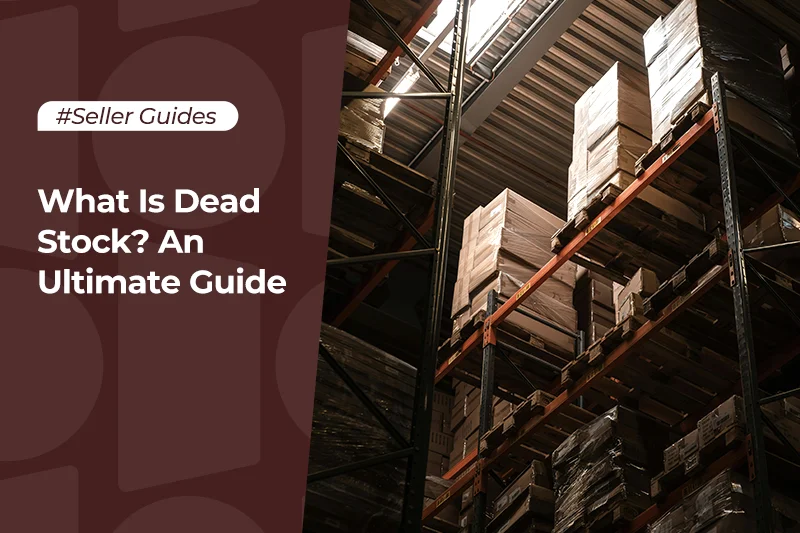What is cross-selling? An interactive guide

If you own an eCommerce website, you’ll want to know how to increase your average order value, improve customer retention, and basically generate more money online. In this interactive guide, we will explain the basics of cross-selling as an effective sales tactic and explain how it’s different from upselling. So, get ready to learn everything you need to know about cross-selling, customer retention, and boosting your online profits by recommending additional products for customers to add to their shopping cart.
Table of Contents
What is cross-selling?
Cross-selling is a powerful sales technique that involves encouraging customers to spend more money online by adding more products related to what they have already shown interest in their cart. ¹ Suppose a customer clicks on an online store selling pet supplies. The user clicks through to the dog treat category page and starts to browse through the online selection of items. When they find a product they’d like to buy, they add it to their shopping cart. This is when cross-selling kicks in. The customer has shown interest in a specific item, but the retailer now has an opportunity to increase the average order value.
Since the customer is obviously looking for dog treats, and more than likely has a pet dog, they might also be interested in other complementary products such as dog toys, dog beds, or dog coats. Cross-selling, using plugins and sales software, can now recommend relevant products to the customer, encouraging them to add more items to the cart before checking out.
Taking this a step further, cross-selling could also tell the user that other customers have bought the following items when buying the dog treats they have added to their shopping cart. This particular sales tactic helps to build trust, as the customer considers adding additional items to their order, following the behavior of other buyers.
Put simply, cross-selling aims to increase the average order value of each customer who visits an eCommerce website by highlighting complimentary items that the customer will probably be interested in buying. Since they’re relevant, there is a higher chance of conversion. You can also increase customer loyalty, deepen customer relationships, and improve customer retention rates by helping users find items they want, need, or are interested in. This makes cross-selling an effective growth strategy for B2B and B2C businesses. ²
While cross-selling can take place as a customer is actively browsing a website, it can also happen in the days following an online purchase via an email campaign or paid ad strategy. Businesses can target customers who have bought a particular item from their eCommerce store and recommend additional products that would complement their previous orders. Let’s say a customer has purchased a red dress from an independent designer online. The next day, the customer could be sent an email recommending a pair of stiletto heels and a purse that would complete the look, based on the designer’s personal recommendations. This technique demonstrates how the retailer values the buyer and invests time into considering what might make their outfit look even better.
If we consider a B2B business model, suppose a retailer has bought eco-friendly packaging supplies online. A week later, they might see an ad campaign promoting additional sustainable packaging items such as shipping labels, biodegradable boxes, plastic-free protective packaging, etc. The next time they order packaging, these items will be again recommended as add-ons, increasing the buyer’s average order value.
If you’re still not sure how powerful cross-selling is, Amazon estimates that 35 percent of its revenue comes from cross-selling activity. Both their ‘frequently bought together’ and ‘customers who bought this item also bought’ sections promote products related to the item you are currently viewing on Amazon. McDonald’s is another classic example of how cross-selling can also be applied in person, by asking customers ‘would you like fries with that?’. ³
How does cross-selling work?
Unlike upselling, which aims to increase the number of items in the shopping cart or order value regardless of relevancy, cross-selling in the eCommerce environment involves identifying related products and creating appropriate offers. In both cases, though, the goal is to increase the average order value. ⁴
To understand how cross-selling works in practice, let’s take a look at the best practices for cross-selling success:
- Consider the item the user intends to buy and what they might not have in their office or workplace, or included in the box that will be needed to use the product. Let's say a new customer is about to purchase a laptop from your online electronics store. You know that the laptop doesn’t include a protective case or a wireless mouse and pad, which might make it easier for those who are working from home or using the laptop to play games. You can recommend that the customer purchases these relevant products too.
- Bundle complementary items together on your website so that the customer doesn’t need to search for relevant products, accessories, or components themselves. This cross-sell sales tactic can save customers valuable time and money.
- Discount complementary products as a retailer to make bundles more attractive to new customers.
- Highlight how add-on items would work together on your website to educate new customers on the benefits of buying items together and in one go. This makes it easier for buyers to say ‘yes’ to cross-sell promotions.1
Here are four effective cross-selling sales tactics you can apply as an eCommerce retailer today:
1: Offer additional services to new customers
A great way to cross-sell as a B2B retailer is to offer additional services to new clients. This could be a five working day guarantee delivery, a sample or mock-up service (ideal for manufacturers), or if they are purchasing one product from you, make sure they’re aware of what else you can offer that would complement their order.
2: Use bundles to increase average order value
Bundles can double your average order value so encourage buyers to buy in bulk. Before finalizing their order, you can offer new customers a discount if they were to choose a bundle order of relevant products. This might apply to the price of the products or the cost of delivery.
3: Use data to make better decisions
Analyzing a client’s previous orders can help you uncover cross-sell opportunities as a retailer. The next time the customer contacts you or visits your online store, you will have an idea about what they might be interested in buying next, based on the data you have captured.
4: Improve product descriptions
Educate new customers by creating professional, keyword-rich product descriptions and illustrate the benefits of each product or service you offer online. By informing customers about your products, their unique selling points, and the benefits of adding additional products to their shopping cart, you can position yourself as an industry expert and build customer retention and trust.
To learn how to write professional product descriptions as a B2B retailer, read our article on: How to optimize a B2B product page that converts.
Cross-selling vs. Upselling
So, what’s the difference between cross-selling and upselling? Well, as we’ve just discussed, effective cross-selling is based on recommendations, depending on a customer’s purchases or current interest. While cross-selling and upselling are both typically performed at the mid-to-late stages of the conversion funnel, upselling persuades the buyer to buy something more expensive. This usually means an add-on that is not necessary but helps to significantly increase the average order value. Upselling can also mean upgrading to a higher value item that might have additional benefits, features, or unique selling points, but will cost more than what the buyer had initially intended to spend online.
Cross-selling and upselling can be used together to form a highly targeted sales tactic online. You can use one or both techniques, depending on your unique business model. But if a retailer wants to increase profit margins, it is recommended to implement at least one of these sales techniques online to optimize business performance.3
Advantages and disadvantages of cross-selling
Cross-sells are considered one of the most effective and easiest methods of generating additional revenue as a business. It can strengthen customer relationships, generate more income and add value to buyers. However, if the cross-sold product or service doesn’t enhance the value of the customer’s primary purchase, it can be damaging to your business’s reputation online.5
So, before you move forward with cross-selling as a business, let’s review the advantages and disadvantages of this particular approach.
Advantages of cross-selling:
- Increase sales revenue by recommending relevant products to a new customer before finalizing the items in their shopping cart.
- Improve customer satisfaction by making it easier than ever to find all the items you need as a buyer. Reduce the risk of disappointment when a customer buys a product that needs additional items to work. This almost always applies to electronics.
- Increase customer lifetime value through deeper integration within a customer’s business. Build up a strong working relationship with B2B customers and demonstrate that they can buy all their products from your eCommerce store.
- Educate new customers on your entire product range and highlight the benefits of each item in relation to their current, real-time interest online.
- Consider a customer’s pain points and promote complementary items that might solve their current or future issues, saving buyers precious time. Find out how to develop B2B customer personas to discover pain points here: B2B buyer personas the ultimate guide.
- Optimize your sales funnel and build trust between your business and your unique customer base.
Disadvantages of cross-selling:
- Confuse new customers by promoting too many add-on items, which could end up losing your business money in the long run as buyers abandon the checkout process altogether.
- Frustrate buyers by over-complicating the checkout process, making it difficult to finalize their purchases.
- Be perceived as implementing a ‘hard sell’ sales tactic by constantly trying to encourage buyers to increase their order, which risks driving customers away.
- It can be limited to online conversions, as existing customers who purchase by phone, email, or in-person may not enjoy being told about additional products when they want to immediately place a repeat order with you.
- Increasing the average order value can also add additional stress to your customer service department. Should a buyer need to return or cancel their items, the average order value will now be much more significant than it was before.2
Sell on Alibaba.com
Both cross-selling and upselling are invaluable online sales strategies and can help you increase your average order value, improve customer retention rates, and expand your profit margins. But, to implement such techniques, you’ll need a modern, user-friendly eCommerce platform with the functionality to offer retailers upsell and cross-sell strategies.
Alibaba.com empowers sellers by helping them to promote relevant items, highlight key benefits and boost their sales performance online. For more sales techniques to optimize your B2B business, read our article on: 10 digital marketing strategies for manufacturers.
Create an account on Alibaba.com to start selling today!
References:
1: https://www.shopify.com/encyclopedia/cross-selling
2: https://www.salesforce.com/eu/learning-centre/sales/cross-selling/
3: https://www.forbes.com/sites/chuckcohn/2015/05/15/a-beginners-guide-to-upselling-and-cross-selling/?sh=66fa3d7f2912
4: https://magento.com/resources/difference-between-cross-selling-and-upselling
5: https://corporatefinanceinstitute.com/resources/knowledge/other/cross-sell/
Start your borderless business here
Tell us about your business and stay connected.
Keep up with the latest from Alibaba.com?
Subscribe to us, get free e-commerce tips, inspiration, and resources delivered directly to your inbox.














